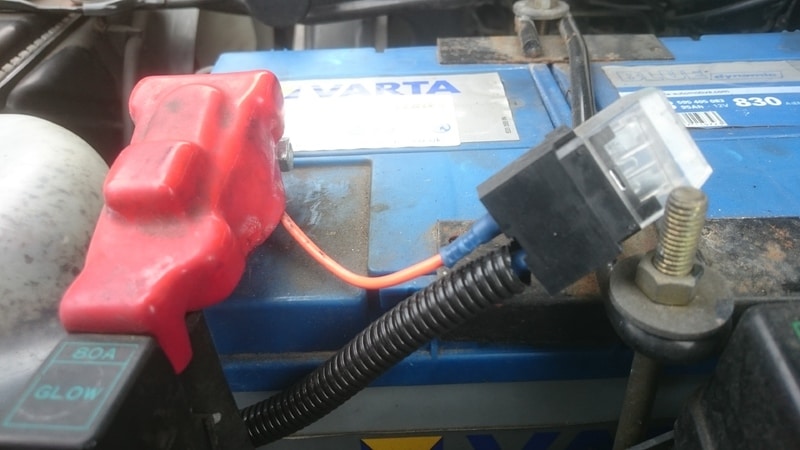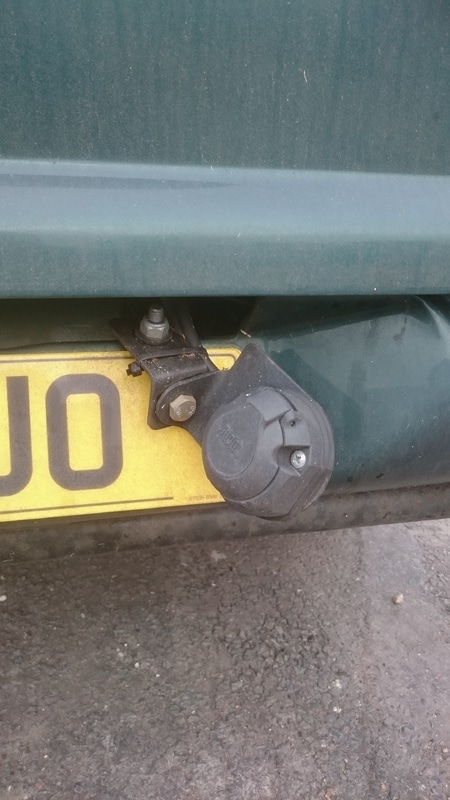Batteries
Regular starting batteries provide high current for engine starting but cannot be discharged much or they will fail. Leisure batteries are starting batteries that are a bit more tolerant of being discharged by more than a few percent, but still maybe only a few dozen times before they are toast, and certainly no lower than 50% charge. Deep cycle and AGM batteries are much more expensive and can be discharged much more each time and can tolerate deep discharge hundreds of times. I use an AGM battery that can be discharged down to 20% hundreds of time, but cost about £300

So don't expect to buy a cheap leisure battery, charge it at the start of your trip, run it down and expect to repeat that process many times. Hence having some method of charging from your truck alternator is a good thing to recharge the battery as you drive.
Charging off your alternator
Traditionally you could just use a permanent 12v wire from your truck battery (charged by the alternator) through the caravan socket on the back of your truck, and then through the camper wiring to the battery (usually at the front of your camper, though I see yours is at the rear). The first problem is that without any form of isolation as you run down your camper battery you are also running down your truck battery so may not be able to start it in the morning.
This can be solved with a relay fitted under the bonnet that only connects the camper battery when the engine is running.
The next problem is voltage drop. Your alternator will provide a healthy voltage to charge the truck battery maybe a foot from it (connected via nice thick cables). But now you are running a probably thin wire through a charging relay, the whole length of your truck and back and through a connector. The thinness of the wire and its length will cause a voltage drop, as will the charging relay and connector. So what you actually get at your camper's battery is too low a voltage to charge it properly and certainly quickly.
DC to DC chargers
These are the solution. Sterling Power and CTEK both sell these, though they aren't that cheap. You install them near your camper battery and they do the following:
They take the now inferior voltage they receive all the way from the truck alternator and using clever electronics can increase the voltage to one reasonable for charging at the expense of amps. They are also 'intelligent' and that means they go through various stages of charging, adjusting the charging voltage and current to provide optimal charging for a lead-acid battery.
This means they charge your battery more quickly and help elongate its life.
Some also come with a 2nd input which you can wire up to solar panels. On my one if the camper battery is full and the solar panels have sun it will send voltage back down the wire to the truck battery to top that up,
The catch
My truck is 10 years old. Being old-school the alternator runs all the time the engine runs. I have heard that new vehicles have cleverer alternators that disconnect themselves to save fuel once the truck battery is charged. If you have one of these you need to do more research because it might be the alternator won't provide sufficient power to charge an auxiliary battery.
Other ways of charging
I have a DC to DC charger on my camper. In addition it takes an input from the solar panels on the roof, so whenever there is sunlight it is charging the battery, e.g. when parked during the day. Finally I have a multi-stage intelligent mains charger that fires up as soon as I plug the camper into the mains, e.g. on a campsite where I have paid for full hook-up. So that is 3 different sources of power. However, I have a compressor fridge that is power hungry unlike 3-way propane fridges, so I have to maximise my battery charging.
Keeping an eye on your battery
Unfortunately you are usually in the dark about the state of charge of your battery. If you know how much charge remains in your battery you can better ration that power out to preserve the life of the battery, e.g. turn off some lights, unplug your laptop or phone from the 12v socket, etc.
If you isolate the battery you can then measure its voltage and work out the state of charge from that. I believe you are really supposed to leave it a while unplugged in order to get an accurate reading. Clearly this is inconvenient if you want to check the state of charge half way through watching TV or simply in the winter when you need the lights on to see.
So you can buy battery meters that you wire in-line with the cables to the camper battery. These will keep a running total of the amps going into and out of the battery. I have one made by Victron. Like the DC-to-DC chargers these are not cheap, but being able to see you are at 83% battery charge at the press of a button gives you so much more peace of mind and allows you to plan better.
Steve.


